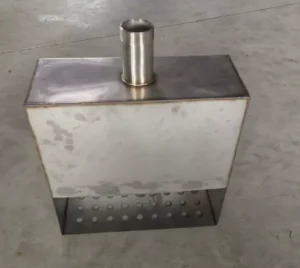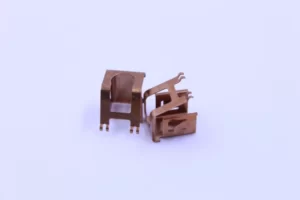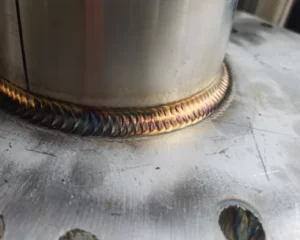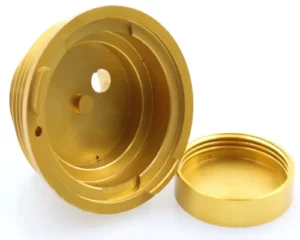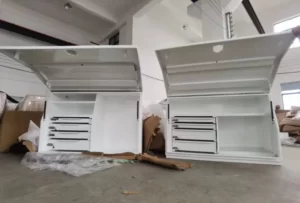Custom engineering plastic parts
We offer a wide range of custom sheet metal parts fabrication services for numerous projects from rapid prototypes to mass production.
All information is safe and confidential

about engineering plastic
Engineering plastic is a material with comprehensive properties, high rigidity, good heat resistance, and electrical insulation. It can usually be used as engineering material and replace metal materials to customize mechanical parts. It can be used in environments with harsh chemical and physical conditions.
However, the cost of engineering plastics is relatively high, and it is suitable to replace metal materials such as stainless steel, aluminum alloy, and titanium alloy to save material costs.
At Supro MFG, we usually use plastic tubes, rods, plates and other materials to manufacture rapid prototypes or small batch products, including: stamping, CNC machining, ultrasonic welding, etc.
Popular engineering plastic materials include: acetal, nylon, ABS, PVC, polycarbonate, and polypropylene.
Why Choose Supro MFG
Our in-house manufacturing equipment can provide customized engineering plastic parts solutions such as sheet metal fabrication, sheet metal bending, sheet metal stamping, welding fabrication, and sheet metal prototype.
We have focused on customized plastic parts and rapid prototyping for more than 20 years. Professional manufacturing technology can efficiently create the parts required by customers and maintain the original performance of aluminum alloy on the basis of meeting all quality requirements.
We refuse to cut corners and cut corners, and accelerate the development of customized plastic parts manufacturing projects for all customers with economical factory prices and world-class quality standards.
Engineering plastics Style
The most popular performance of stainless steel is corrosion resistance, which reduces the effect as the carbon content increases, so maintaining a low carbon level is one of the main advantages of stainless steel.
- POM is a milky white opaque crystalline linear thermoplastic resin,
- High rigidity and hardness, close to metal, it is an ideal material to replace metal materials such as copper, steel and aluminum;
- Excellent tensile strength, bending strength, creep resistance and fatigue resistance
- Small friction coefficient, wear resistance, good dimensional stability, good surface gloss, high viscoelasticity, and excellent electrical insulation
- Excellent chemical resistance: In addition to strong acids, phenols and organic halides, it is stable to other chemicals and resistant to oil.
Nylon has good comprehensive properties, including mechanical properties, heat resistance, abrasion resistance, chemical resistance and self-lubrication, and has low friction coefficient, certain flame retardancy, easy processing, suitable for glass fiber and Other fillers are filled to enhance modification, improve performance and expand the scope of application.
- Nylon has very good strength, toughness and tensile resistance.
- The friction coefficient is small, the surface is smooth, and it is very wear-resistant. Used in mechanical parts with self-lubricating function.
- It has excellent fatigue resistance and can be repeatedly flexed.
- The heat resistance is very good, it can be used for a long time at about 120°, and the instantaneous temperature can be kept unchanged at about 150°。
- The main disadvantages of nylon: It is easy to absorb water, is not resistant to strong acid, has poor light resistance, and has strict requirements on injection molding conditions.
ABS plastic has the common properties of three components. A makes it resistant to chemical corrosion, heat resistance, and has a certain surface hardness, B makes it have high elasticity and toughness, and S makes it have the processing and molding characteristics of thermoplastics and improve electrical properties. performance.
Therefore, ABS plastic is a kind of “tough, hard and rigid” material with easily available raw materials, good comprehensive performance, low price, and wide range of uses. ABS plastic has been widely used in machinery, electrical, textile, automobile, aircraft, ship and other manufacturing industries and chemical industries.
PVC is a white powder with an amorphous structure, with a small degree of branching. The glass transition temperature is 77~90℃, and it starts to decompose around 170℃. It has poor stability to light and heat. Decomposition produces hydrogen chloride, which is further autocatalyzed and decomposed, causing discoloration and rapid decline in physical and mechanical properties. In practical applications, stabilizers must be added to improve stability to heat and light.
The molecular weight of industrially produced PVC is generally in the range of 50,000 to 110,000. It has a large polydispersity. The molecular weight increases with the decrease of polymerization temperature. It has no fixed melting point. It starts to soften at 80-85°C and becomes viscoelastic at 130°C. , 160~180℃ begin to transform into viscous fluid state; it has good mechanical properties, the tensile strength is about 60MPa, the impact strength is 5-10kJ/m2, and it has excellent dielectric properties.
PVC used to be the world’s largest production of general-purpose plastics, and it has a wide range of applications. It is widely used in building materials, industrial products, daily necessities, floor leather, floor tiles, artificial leather, pipes, wires and cables, packaging films, bottles, foaming materials, sealing materials, fibers, etc.
Polycarbonate is colorless and transparent, heat-resistant, impact-resistant, flame-retardant BI grade, and has good mechanical properties at normal operating temperatures. Compared with performance close to polymethyl methacrylate, polycarbonate has good impact resistance, high refractive index and good processing performance. It has UL94 V-2 flame retardant performance without additives. However, the price of polymethyl methacrylate is lower than that of polycarbonate, and large-scale devices can be produced by bulk polymerization.
The wear resistance of materials is relative. If you compare ABS materials with PC materials, it means that PC materials have better wear resistance. However, compared with most plastic materials, the wear resistance of polycarbonate is relatively poor, at a low to medium level, so some polycarbonate devices used for wear-prone applications require special surface treatment.
Classification
Anti-static PC, conductive PC, fiber-added fire-proof PC, anti-ultraviolet and weather-resistant PC, food-grade PC, chemical-resistant PC.
Polypropylene is abbreviated as PP, which is a colorless, odorless, non-toxic, translucent solid substance. [4] Polypropylene is a thermoplastic synthetic resin with excellent properties, and is a colorless and translucent thermoplastic lightweight general-purpose plastic. With chemical resistance, heat resistance, electrical insulation, high-strength mechanical properties and good high wear-resistant processing performance, it is quickly used in many fields such as machinery, automobiles, electronics, construction, textiles, packaging, agriculture, forestry, fishery, and food industry. It has been widely developed and applied.
Polyethylene can be processed by general thermoplastic molding methods. It has a wide range of uses, mainly used to make films, packaging materials, containers, pipes, monofilaments, wires and cables, daily necessities, etc., and can be used as high-frequency insulating materials for televisions, radars, etc.
Polyethylene is classified into high-density polyethylene (HDPE), low-density polyethylene (LDPE) and linear low-density polyethylene (LLDPE) according to the polymerization method, molecular weight, and chain structure.
LDPE
Properties: tasteless, odorless, non-toxic, matt surface, milky white waxy particles, density about 0.920 g/cm3, melting point 130℃~145℃. Insoluble in water, slightly soluble in hydrocarbons, etc. It can withstand the erosion of most acids and alkalis, has low water absorption, maintains flexibility at low temperatures, and has high electrical insulation.
LLDPE
Compared with LDPE, LLDPE has excellent environmental stress cracking resistance and electrical insulation, higher heat resistance, impact resistance and puncture resistance.
HDPE
Using injection molding, blow molding, extrusion molding, rotational molding and other molding methods to produce film products, daily necessities and industrial use of various sizes of hollow containers, pipes, packaging calender belts and ties, ropes, fishing nets and weaving fibers, Wire and cable, etc.
Performance of custom plastic parts
Reasonable surface treatment of metal parts can improve the durability, corrosion resistance, heat resistance, electrical conductivity and appearance decoration of the material.
- Compared with general-purpose plastics, it has excellent heat and cold resistance, and has excellent mechanical properties in a wide temperature range, making it suitable for use as a structural material;
- Good corrosion resistance, less environmental impact, and good durability;
- Compared with metal materials, it is easy to process, has high production efficiency, and can simplify procedures and save costs;
- Good dimensional stability and electrical insulation;
- Light weight, high specific strength, and outstanding anti-friction and wear resistance.
Looking for a reliable and economically competitive manufacturer?
Chat with our team of experts to quickly start your next custom galvanized steel parts project.

